Postmodern design: Carlton bookcase by Ettore Sottsass
Pomo summer: Ettore Sottsass' Carlton bookcase was the defining product of the 1980s Memphis Group. In the latest instalment of our Postmodernism series, we explore how its bright coloured laminates and playful form typified Memphis' challenge to Modernism's impersonal aesthetic.
More than anyone, Sottsass is credited with introducing a Postmodernist approach into design by founding Memphis in 1980.
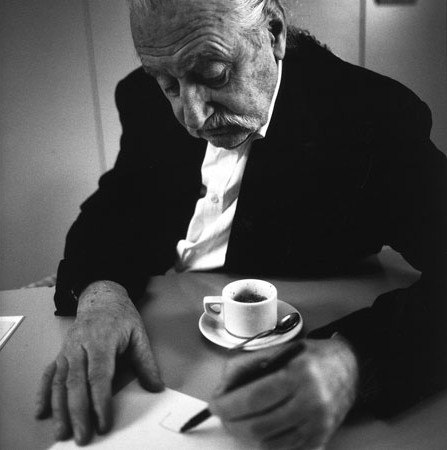
Sottsass' Carlton bookcase – designed for the group's first collection – epitomises his use of brightly coloured laminates, graphic forms and non-functional elements that became the defining style of the decade.
With Memphis, Sottsass wanted to define a new approach to design that broke free of the restrictions of functionalism.
"When I was young, all we ever heard about was functionalism, functionalism, functionalism," Sottsass once said. "It's not enough. Design should also be sensual and exciting."
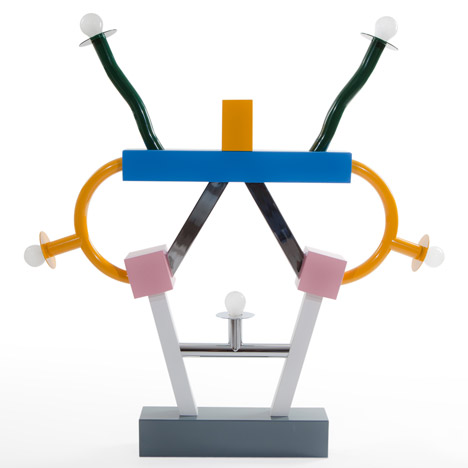
Sottsass himself felt that Postmodernism was an architectural movement, but Memphis shared many of the concerns of the Postmodernists.
The challenge to the "less is more" notion of Modernist design, a focus on appearance over function, and willy-nilly cross-referencing of historic forms and contemporary materials, meant that Memphis quickly became synonymous with Postmodernism.
"The design collective he founded in 1981 not only defined the look of that decade, it was the loudest battle cry yet rattled against Modernism – a multi-coloured, no-shapes-barred assault on the idea of functionalism and all it stood for," said critic Justin McGuirk in a profile on the designer for UK magazine Icon.
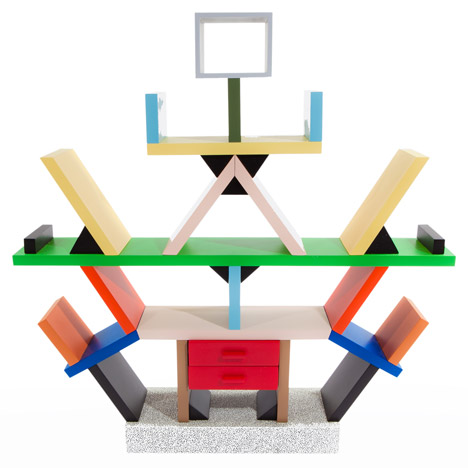
The totemic Carlton, which Sottsass created in 1981, is his most identifiable furniture design. It reads as a bookcase, a room divider and a dresser, depending on who you ask. Its form is ambiguous enough to question, at first glance, whether it's a piece of furniture at all.
The Carlton is constructed of medium density fibreboard (MDF) sections, which are laminated in different colours. It features a stack of horizontal, perpendicular and angled surfaces and has two red drawers just above the base.
The Carlton's seemingly haphazard arrangement of partitions and voids is actually based on a logical system of equilateral triangles, which support both the slanted and flat shelves.
Produced as an unlimited edition, the design became one of the most recognisable Memphis products partly due to its size – measuring 196 centimetres tall and almost as wide. It is still sold by the Memphis Milano design store for €12,230.45 (roughly £8,700).
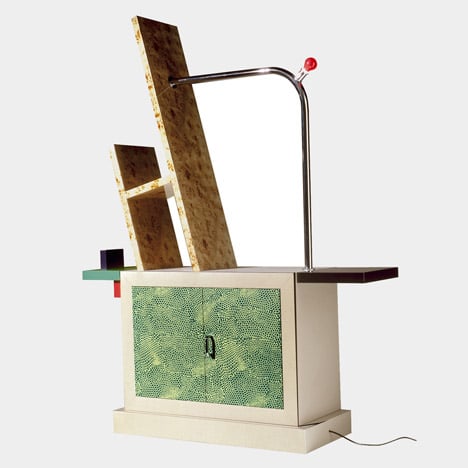
One of the most highly regarded and versatile designers of the 20th century, Sottsass was "a fun loving, libidinous and charismatic guru," according to Glenn Adamson, co-curator the 2011-12 Postmodernism exhibition at London's V&A museum, which included many Memphis pieces.
Sottsass was born in Innsbruck, Austria in 1917. Following in his father's footsteps, he studied architecture in Turin, Italy, and opened his first studio in Milan in 1947, after a spell as a prisoner of war in a Sarajevo concentration camp during the second world war.
In the 1950s and 1960s, he designed office equipment, typewriters and furniture for Italian company Olivetti, including the iconic "pop" Valentine typewriter.
He later became a leading figure in the Radical Design movement, co-founding Studio Alchimia with Alessandro Mendini in 1976.
Memphis was born during a meeting at Sottsass' apartment on Via San Galdino in Milan in 1980, when the designer was already in his sixties. Those present included young designers Michele de Lucchi, George Sowden, Martine Bedin, Nathalie Du Pasquier, Marco Zanini and Matteo Thun.
"At an age when most people were thinking of retiring, Sottsass started stuff with another generation and produced an explosion," Deyan Sudjic, director of London's Design Museum, told Dezeen.
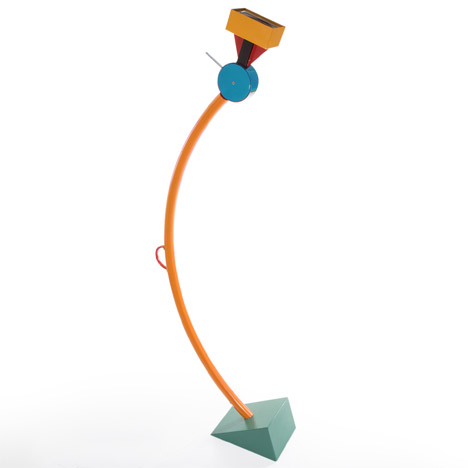
The group's name is allegedly taken from the 1966 Bob Dylan track "Stuck Inside of Mobile with the Memphis Blues Again" that was played throughout their meeting.
"We can remember the first hours of the meeting but not the last ones because we were all drunk," Martine Bedin told Dezeen, who said that the group were united in their desire to break accepted notions of good taste.
"The idea of course was that we wanted to get out of the bourgeois way of making furniture," said Bedin. "The bourgeois house was the idea that every kind of furniture was looking the same. So you had the bed the same style, the clothes, everything the same. So the first step was to create a chaos in the co-ordination of style."
However Bedin said the group did not consider themselves Postmodernists, but rather were descendants of the Radical Design movement.
"Radical Design from the 70s in Florence was a complete destruction of classical architecture," she said. "It was very clear that we distanced ourselves far from Postmodernism. We were taking ideas and items from a very new point of view. it was like putting a big cross through academic and classic culture."
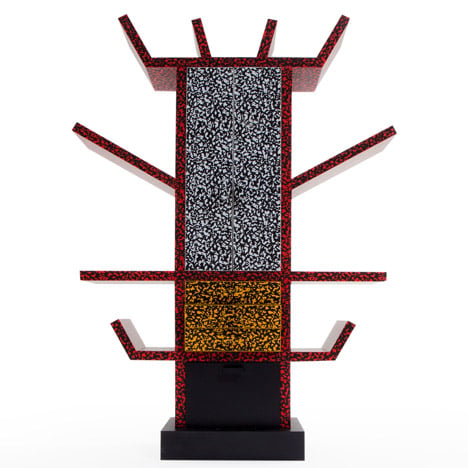
Under Sottsass' direction, the designers came up with a range of products that featured whimsical shapes, and were made using colourful laminated wood and metal provided by Italian company Abet Laminati – combining the design experiment with a marketing exercise.
Bold geometric forms were paired with the bright hues and clashing patterns to create designs that were unlike anything that had been seen before. The style has been described by writer Bertrand Pellegrin as "a shotgun wedding between Bauhaus and Fisher-Price".
The group debuted its collection at Milan's Arc '74 showroom on 18 September 1981, causing a mass-media event that sent waves through the city's design community.
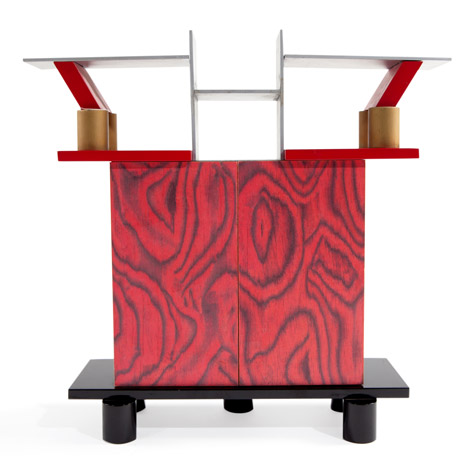
Sottsass himself nearly missed the launch party, according to Glenn Adamson.
"So sensational was the opening of Memphis that Sottsass almost did not attend, thinking (on his way there in the back of a cab, stalled in the crowds) that a terrorist bomb may have gone off in downtown Milan," Adamson wrote in Dezeen guide to Postmodern architecture and design.
Italian author and journalist Barbara Radice – another Memphis Group member and Sottsass' second wife – played a part in documenting and promoting the designs to international audiences through magazines like Domus and a dedicated monograph for the group.
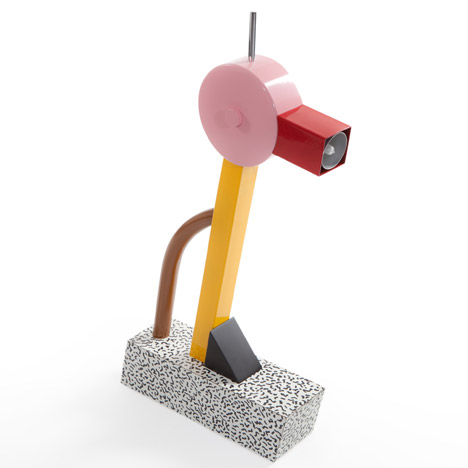
Carlton was just one of a range of designs Sottsass presented at the first Memphis show. Another recognisable piece is the Tahiti table lamp which, at just 60 centimetres tall, is much smaller in scale, but uses similarly bright colours and angled elements.
The shape of the plastic and aluminium light is reminiscent of a tropical bird, with a long yellow neck, a round pink head and a square red beak. It also features a triangular black foot – similar to the supports for the angled sections of the Carlton.
The bulb is located inside the "beak", which can be adjusted up and down by rotating the "head", and the electric cable runs down its back and out of the stand.
Like the bookcase, it has a base covered with a confetti-like pattern called Bacterio that Sottsass designed in 1978.
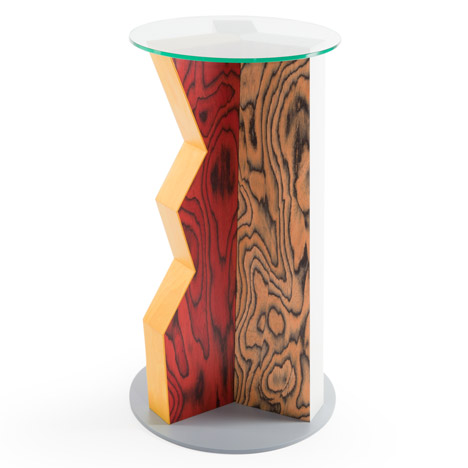
Other notable Sottsass products from the first Memphis collection include the Ashoka lamp, the Casablanca cabinet and the Beverly sideboard.
After the group's initial success, Sottsass quickly snapped up other international architects and designers including Peter Shire and Arata Isozaki to create products for its collections. Notable Postmodern architects Michael Graves, Aldo Rossi and Hans Hollein also contributed to the Memphis product ranges released during the 1980s.
"Ettore was very conscious of what he was doing," said American designer Peter Shire, who joined Memphis at Sottsass' invitation. "He was going around the world to create a community."
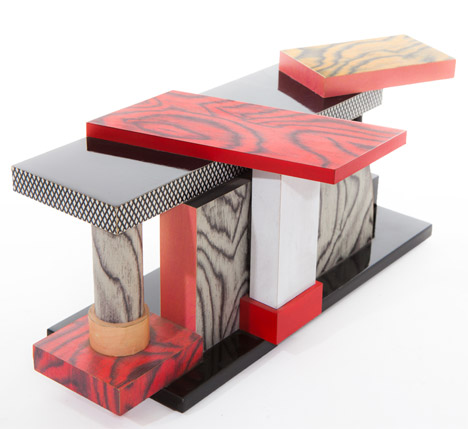
The Memphis Group finally disbanded in 1988, after Sottsass abandoned ship in 1985 to concentrate on his architecture studio Sottsass Associati, but a resurgence in interest for the movement's philosophy and resulting aesthetic has crept back into furniture and homeware design in recent years.
At Milan design week last year, an exhibition presented original Memphis pieces, while a series of new products in a similar style could be spotted across the city.
Sottsass himself has also come back in vogue, following exhibitions of his work both just before and after he died aged 90 in 2007.
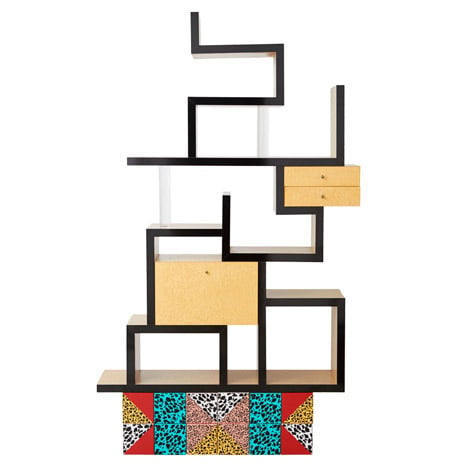
London design store Darkroom presented an exhibition titled So Sottsass in 2013, featuring a series of limited-edition vases and other products based on his work.
Earlier this year, Italian plastic brand Kartell launched a furniture range of original Sottsass designs for the first time – created using technology that wasn't available at the time they were conceived in 2004.
With this new wave of interest in Postmodernism and the Memphis Group, pieces like Carlton and Tahiti remain emblems of Sottsass' radical decision to change conceptions of design and bring a "why not?" attitude to the industry.
Product photography is by Pariano Angelantonio, courtesy of Memphis Milano.